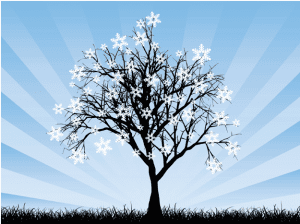 It’s no secret, the upstate has had a pretty traumatic winter this year. It’s been an ongoing cycle of snow, ice, repeat. Believe it or not though, this is what our winters are SUPPOSED to be like. Our Zone 7 is supposed to have low temperatures, risk of snow and especially given our topographical location ice. Being at the foothills of the mountains is a blessing in most ways, but climate wise isn’t one of them.
It’s no secret, the upstate has had a pretty traumatic winter this year. It’s been an ongoing cycle of snow, ice, repeat. Believe it or not though, this is what our winters are SUPPOSED to be like. Our Zone 7 is supposed to have low temperatures, risk of snow and especially given our topographical location ice. Being at the foothills of the mountains is a blessing in most ways, but climate wise isn’t one of them.
This winter has been pretty tough not only on our bodies and spirits, but it has also been rough on most of the plants outside. We’ve been lucky in the past seven or so years and have gotten away with plant crimes – “keeping tropical plants in non tropical areas crimes”. It’s been great to be able to see certain Oleanders, Sago Palms, and ferns heal over, but it was only luck, it wasn’t because our climate has changed. We’re still Zone 7, and finally we’re getting back to being a “normal” Zone 7. (Boo, cold weather is the pits!)
Here are a few tips on how to deal with the cold snap and what you should expect to see happen in spring:
Perennials And Annuals
- Tender Perennials such as Mexican Bush Sage, certain species of Rosemary, and others will be a vacancy in your perennial garden this year. Don’t be surprised to see divots pop up where you’re used to seeing stuff spring to life early in the spring.
- Pansies, Violas and other fall planted annuals are looking less than spry, but don’t worry, they’re not a lost cause. Come spring time, once the soils warm up, they’ll jump back to their beautiful state in no time, just add some fertilizer. Pansies and Violas love the cold, they just don’t bloom much. Remember, they are related to those pesky wild violets that many of us struggle with in our yards – they’re tough!
- Perennial Grasses have more than likely taken a battering with the snow and the cold. Cut them back as soon as possible in order to keep them from making a mess in the spring. They’ll appreciate it!
Trees And Shrubs
- Broadleaf evergreens such as Indian Hawthorn, Viburnum tinus cvs, Loropetalum, Gardenia, and Laurels might have received some foliar damage due to the cold. This isn’t uncommon, and isn’t a sign that your plant is dead. In the spring the plant should shed the necrotic tissue of the leaves and new should appear (if the plant is entirely browned out). If you only suffer some tip burn, cut those off once the weather warms a bit and allow the plant to redevelop.
- Some shrubs are still pretty testy when it comes down to winter temperatures such as Loropetalm ‘Purple Pixie’ and certain Banana Trees. It’s nobodys fault that they’re not going to survive the cold, it’s just a way of nature. In protected microclimates, however, it isn’t uncommon to see them survive because of the insulation around them. These plants will have to be removed. Give them until the end of March to start regenerating new foliage, otherwise replace it with a better cold hardiness selection.
- Certain trees will suffer, but only temporarily. Larger evergreens such as Cryptomeria and certain Junipers will become a little different shade of green due to the temperatures. The Andorra Juniper, for example, turns a burgundy almost bronze color in the winter, it doesn’t mean it’s sick, it just means it’s cold.
- Hedging plants such as Tea Olives and certain Camellias have also suffered, but not to the extent of death. Do a heavier than normal trim this spring to help the plant regenerate healthy leaves. A good fertilizer such as Plant Tone will help them as well.
Ponds, Water Gardens, and Fountains
- Make sure you have water flowing at all times, and if at any point your pond has frozen to the point of solid, you might have some expensive repairs due for you in spring. Rigid form ponds are liable to cracking under severe cold. Rubber lined ponds are fine, but make sure there is a constant supply of water getting to the pump. If this isn’t doable, turn the pump off. If you have fish, invest in an aerator or a pond heater in order to keep a hole in the ice for an exchange of oxygen.
- Many pond plants that we’ve been blessed with using year after year are actually subtropical such as Umbrella Palms and certain Water Cannas. These are beautiful and a treat to see come back in the spring, but aren’t supposed to. Be thankful for this, though. Think of it as less “thinning out” you’ll have to do in the spring.
- Fish aren’t hungry, they’re cold. Make sure you keep the water flowing and keep the food out of the pond until the temperatures rise a bit. If you start adding food into the water and they’re not eating it, it can lead to a level of toxicity in the water that will stress your fish. Even if they DO eat, they can’t digest it properly. Just save it for spring.
- If the pump in your water feature/pond is turned off, watch out for frozen pipes or filers that are above ground.




